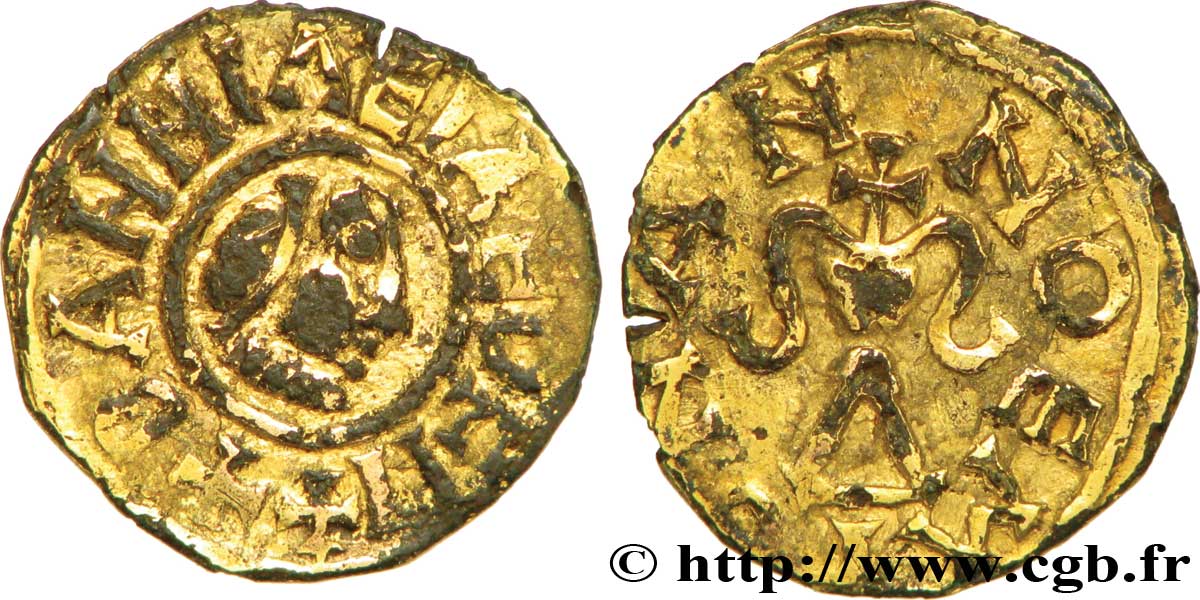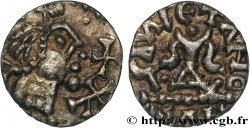v50_0112 - MEROVINGIAN COINAGE - BANASSAC (BANNACIACO) - Lozere Triens au type de CHARIBERT II (528-531)
MONNAIES 50 (2011)
Starting price : 1 500.00 €
Estimate : 2 500.00 €
Realised price : 1 600.00 €
Number of bids : 2
Maximum bid : 2 100.00 €
Starting price : 1 500.00 €
Estimate : 2 500.00 €
Realised price : 1 600.00 €
Number of bids : 2
Maximum bid : 2 100.00 €
Type : Triens au type de CHARIBERT II (528-531)
Date: VIIe siècle
Mint name / Town : Banassac (48)
Metal : gold
Diameter : 14,5 mm
Orientation dies : 3 h.
Weight : 0,99 g.
Rarity : UNIQUE
Coments on the condition:
Monnaie sur un flan large et régulier avec le droit et le revers complets. Le métal est de mauvaise qualité, avec une teinte plus sombre sur les parties les plus en reliefs, comme pour les monnaies fourrées ou en très bas or de cette époque
Catalogue references :
Predigree :
Cet exemplaire est le n° 1343 de MONNAIES 36
Obverse
Obverse legend : + BANNIACIACO FIT +.
Obverse description : Tête diadémée à droite, diadème et cou perlés, dans un grènetis intérieur ; légende circulaire commençant à six heures et grènetis extérieur.
Reverse
Reverse legend : IONAN NOEM.
Reverse description : Calice à deux anses, surmonté d’une croisette.
Commentary
Ce triens semble unique, avec la légende + BANNIACIACO FIT + et le grènetis intérieur au droit. Au revers, le nom du monétaire est confus et ne correspond à rien de tout ce qui est publié. L’alliage est très mauvais, mais c’est souvent le cas sur les frappes tardives. Faut-il conclure qu’il s’agit de l'œuvre d’un faussaire de l’époque de Charibert (sans prendre le risque de nommer le roi sur la monnaie) ou bien d’une frappe officielle reprenant un type plus ancien à une époque de pénurie de métal ?.








 Report a mistake
Report a mistake Print the page
Print the page Share my selection
Share my selection Ask a question
Ask a question Consign / sell
Consign / sell
 Full data
Full data







